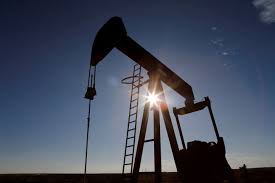
Exxon Mobil has projected that global crude oil demand will remain above 100 million barrels per day (bpd) through 2050, signaling a robust outlook for the oil industry that contrasts sharply with the forecasts of its European counterparts, particularly BP. This forecast, outlined in Exxon’s latest global oil outlook, underscores the company's ambitious production growth plans, which stand out among Western oil majors.
Chris Birdsall, Exxon's Director of Economics, Energy, and Strategic Planning, emphasized the enduring nature of oil and gas demand, stating, "Oil and gas demand have a very, very long runway and will continue to grow over the next few years." Exxon’s plans include pumping 4.3 million barrels of oil and gas per day this year, a production level 30% higher than that of its top U.S. rival, Chevron.
Exxon also offered a more cautious perspective on global carbon emissions reductions compared to BP. The company anticipates that significant technological advancements will lead to emissions reductions after 2029, whereas BP predicts this will occur by the middle of this decade.
Despite the rise of electric vehicles, Exxon estimates that their impact on long-term global oil demand will be minimal. Even if every new car sold in 2035 were electric, Exxon believes crude oil demand would still be 85 million bpd, the same level as in 2010. This contrasts with BP's projection that oil consumption will peak in 2025 and decline to 75 million bpd by 2050.
Exxon’s forecast is significantly higher than the 24 million bpd of crude the International Energy Agency (IEA) suggests would be necessary to achieve net-zero emissions by 2050. The company also estimates that 67% of the global energy mix in 2050 will still be supplied by oil, natural gas, and coal, a slight decrease from 68% last year.
Exxon stressed the necessity of continued investments in oil, particularly as the world transitions to unconventional resources such as U.S. shale. Wells in these formations have a shorter production lifespan and a more pronounced natural decline, according to Exxon. Without new investments, the company projects that output could decrease by about 15% per year, a much steeper decline than the IEA’s 2018 estimate of 8% per year.
This potential decline could have drastic implications for global oil prices, which Birdsall warned could quintuple if supply falls to 30 million bpd as early as 2030. "Global oil and natural gas supplies would virtually disappear without continued investments," he said, highlighting the shift to more short-cycle unconventional assets as a key driver of this change.
Exxon’s outlook reflects a strategic emphasis on sustaining oil production and investments, suggesting that the energy transition will require a more complex balance between traditional and unconventional energy sources than previously anticipated.
(Source:www.marketscreener.com)
Chris Birdsall, Exxon's Director of Economics, Energy, and Strategic Planning, emphasized the enduring nature of oil and gas demand, stating, "Oil and gas demand have a very, very long runway and will continue to grow over the next few years." Exxon’s plans include pumping 4.3 million barrels of oil and gas per day this year, a production level 30% higher than that of its top U.S. rival, Chevron.
Exxon also offered a more cautious perspective on global carbon emissions reductions compared to BP. The company anticipates that significant technological advancements will lead to emissions reductions after 2029, whereas BP predicts this will occur by the middle of this decade.
Despite the rise of electric vehicles, Exxon estimates that their impact on long-term global oil demand will be minimal. Even if every new car sold in 2035 were electric, Exxon believes crude oil demand would still be 85 million bpd, the same level as in 2010. This contrasts with BP's projection that oil consumption will peak in 2025 and decline to 75 million bpd by 2050.
Exxon’s forecast is significantly higher than the 24 million bpd of crude the International Energy Agency (IEA) suggests would be necessary to achieve net-zero emissions by 2050. The company also estimates that 67% of the global energy mix in 2050 will still be supplied by oil, natural gas, and coal, a slight decrease from 68% last year.
Exxon stressed the necessity of continued investments in oil, particularly as the world transitions to unconventional resources such as U.S. shale. Wells in these formations have a shorter production lifespan and a more pronounced natural decline, according to Exxon. Without new investments, the company projects that output could decrease by about 15% per year, a much steeper decline than the IEA’s 2018 estimate of 8% per year.
This potential decline could have drastic implications for global oil prices, which Birdsall warned could quintuple if supply falls to 30 million bpd as early as 2030. "Global oil and natural gas supplies would virtually disappear without continued investments," he said, highlighting the shift to more short-cycle unconventional assets as a key driver of this change.
Exxon’s outlook reflects a strategic emphasis on sustaining oil production and investments, suggesting that the energy transition will require a more complex balance between traditional and unconventional energy sources than previously anticipated.
(Source:www.marketscreener.com)














